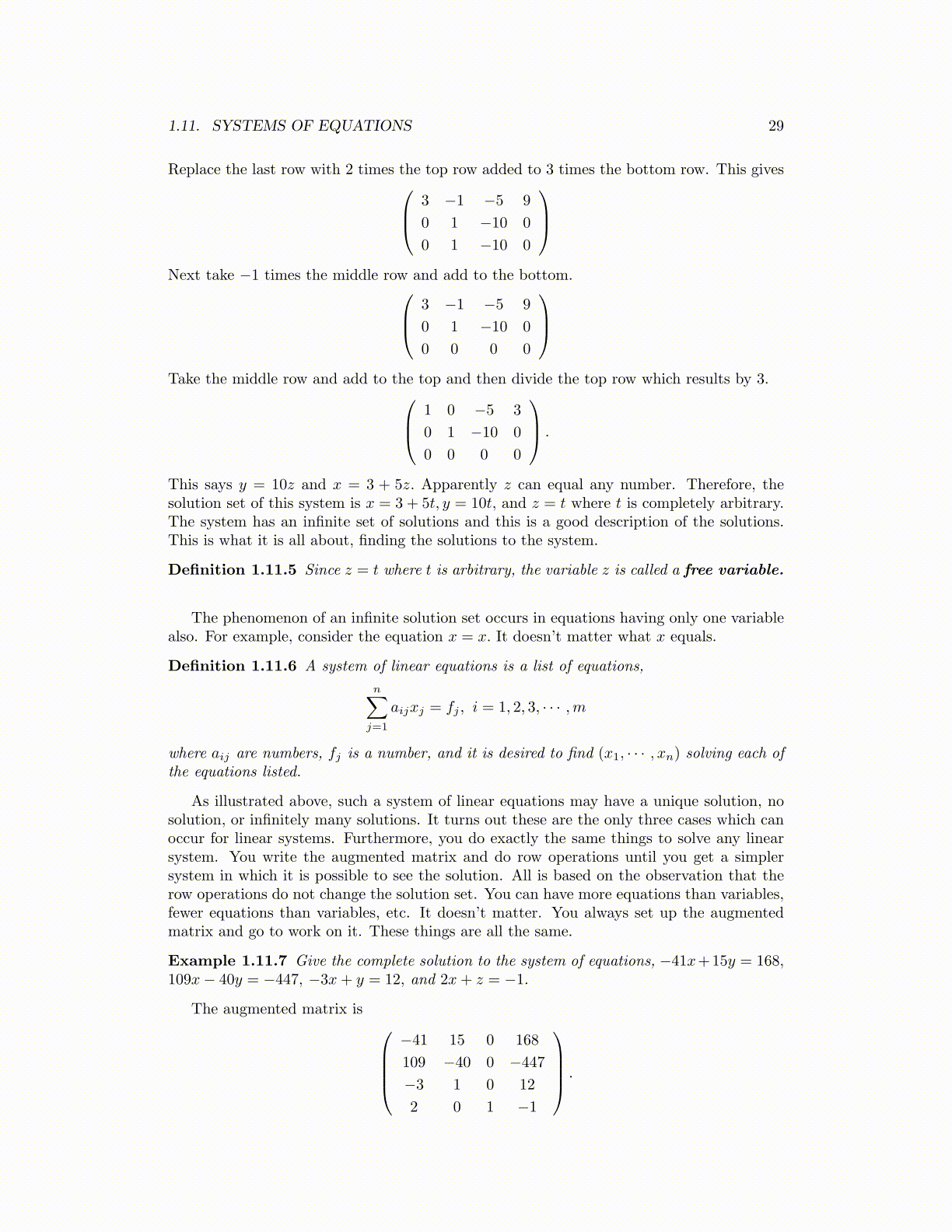
1.11. SYSTEMS OF EQUATIONS 29
Replace the last row with 2 times the top row added to 3 times the bottom row. This gives 3 −1 −5 9
0 1 −10 0
0 1 −10 0
Next take −1 times the middle row and add to the bottom. 3 −1 −5 9
0 1 −10 0
0 0 0 0
Take the middle row and add to the top and then divide the top row which results by 3. 1 0 −5 3
0 1 −10 0
0 0 0 0
.
This says y = 10z and x = 3 + 5z. Apparently z can equal any number. Therefore, thesolution set of this system is x = 3 + 5t, y = 10t, and z = t where t is completely arbitrary.The system has an infinite set of solutions and this is a good description of the solutions.This is what it is all about, finding the solutions to the system.
Definition 1.11.5 Since z = t where t is arbitrary, the variable z is called a free variable.
The phenomenon of an infinite solution set occurs in equations having only one variablealso. For example, consider the equation x = x. It doesn’t matter what x equals.
Definition 1.11.6 A system of linear equations is a list of equations,
n∑j=1
aijxj = fj , i = 1, 2, 3, · · · ,m
where aij are numbers, fj is a number, and it is desired to find (x1, · · · , xn) solving each ofthe equations listed.
As illustrated above, such a system of linear equations may have a unique solution, nosolution, or infinitely many solutions. It turns out these are the only three cases which canoccur for linear systems. Furthermore, you do exactly the same things to solve any linearsystem. You write the augmented matrix and do row operations until you get a simplersystem in which it is possible to see the solution. All is based on the observation that therow operations do not change the solution set. You can have more equations than variables,fewer equations than variables, etc. It doesn’t matter. You always set up the augmentedmatrix and go to work on it. These things are all the same.
Example 1.11.7 Give the complete solution to the system of equations, −41x+15y = 168,109x− 40y = −447, −3x+ y = 12, and 2x+ z = −1.
The augmented matrix is −41 15 0 168
109 −40 0 −447
−3 1 0 12
2 0 1 −1
.